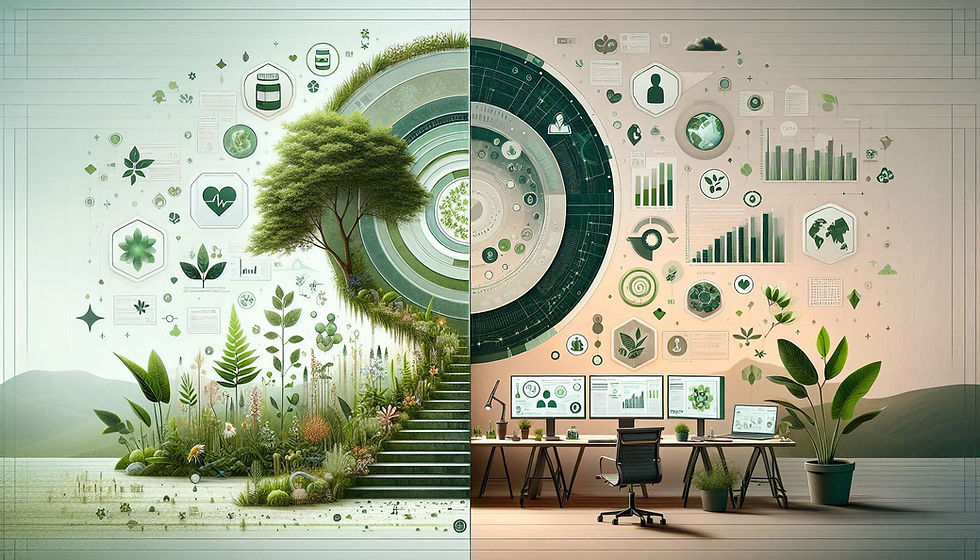Trends in Sustainable Packaging: Biodegradable Materials, Reusable Options, and Successful Case Studies
- Aaron Levin
- Feb 6
- 3 min read
Updated: Jul 4
In the last few years, sustainable packaging has become a hot topic. Businesses and consumers are increasingly mindful of their choices and how they affect the environment.
As companies strive to reduce waste and pollution, exciting new solutions are emerging in packaging. This post dives into the future of sustainable packaging, highlighting biodegradable materials, reusable options, and inspiring case studies that showcase the shift towards eco-friendly practices.
The Rise of Biodegradable Materials
Biodegradable materials are leading the way in sustainable packaging innovations. These materials decompose more naturally than traditional plastics, significantly reducing their environmental impact. Made from renewable sources, like plants, they serve as a more sustainable alternative.

For example, packaging made from cornstarch can break into organic matter in just a few months under the right conditions. Another innovative material is mushroom mycelium, which not only decomposes but also enriches the soil. Companies are increasingly offering compostable packaging suited for both industrial settings and home composting, making it easier for consumers to participate in sustainable practices.
The benefits extend beyond waste reduction. Strong collaborations among manufacturers, retailers, and consumers create a circular economy. Businesses that invest in biodegradable options gain a competitive edge that appeals to environmentally conscious shoppers. According to a 2022 survey, 73% of consumers are willing to pay more for products with sustainable packaging.

Exploring Reusable Packaging Options
While biodegradable materials are vital, focusing on reusable packaging options is equally essential. Reusable packaging includes containers that can be washed and reused several times, significantly minimizing single-use waste.
Take the rise of reusable tote bags, for example. Many consumers now bring their bags to the grocery store, replacing plastic ones. Brands employing deposit-return systems incentivize customers to return packaging for a small refund. This not only drives consumer loyalty but also raises awareness about waste reduction.

Some restaurants are implementing returnable containers for takeout in the food delivery space. Companies like Deliveroo and Eat are testing programs where customers return their containers for cleaning and reuse. These initiatives showcase a shift in consumer habits and highlight the potential for broader adoption of sustainable options.
Successful Case Studies in Sustainable Packaging
Several companies are setting high standards for sustainable packaging, serving as models for others.
Unilever’s Commitment to Sustainable Packaging
Unilever is a global consumer goods leader committed to sustainable packaging. By 2025, the company aims for all its packaging to be reusable, recyclable, or compostable. Their efforts include redesigning products and collaborating with industry partners for eco-friendly solutions.
In 2019, Unilever launched a series of shampoo bars with minimal packaging. Compared to traditional liquid shampoos, these bars produced significantly less waste, demonstrating innovative design and commitment to sustainability. By 2022, Unilever reported that 50% of its plastic packaging was recycled.

Coca-Cola’s Recycle and Renew Initiative
Coca-Cola is another prominent player taking serious steps to improve sustainable packaging. Their "Recycle and Renew" initiative aims to collect and recycle an equivalent of every bottle or can sold by 2030. In tandem with this goal, Coca-Cola intends to incorporate 50% recycled materials in all its bottles by 2030.
Their partnerships with recycling firms and community efforts have increased recycling rates, ultimately promoting a circular economy. This initiative illustrates the importance of rethinking packaging throughout its lifecycle – from production to consumption.
The Road Ahead: Challenges and Opportunities
While trends in sustainable packaging are promising, challenges remain. Transitioning to biodegradable and reusable materials often requires significant technological and infrastructure investments. There are also challenges regarding consumer understanding and acceptance of these new practices.
Yet, the opportunities are vast. With increasing awareness and demand for sustainable solutions, companies prioritizing innovative packaging will likely gain a competitive advantage. Collaborative efforts among businesses, governments, and consumers are essential for driving meaningful change in the industry.

Moving Towards a Sustainable Future
As we embrace a future where sustainability is essential, innovations in packaging play a crucial role in minimizing environmental harm. Biodegradable materials and reusable options are paving the way, supported by inspiring case studies from leading companies.
The packaging industry is at a pivotal point, with the potential to redefine its practices for the better. By adopting these trends and learning from successful examples, businesses can meet consumer needs while contributing to a healthier planet. Committing to sustainable packaging is not merely a trend but a duty to support a thriving environment for future generations.



Comments